19.12.2010 | 10:44
Ísöld Spegilsins.

Á sjötta áratugnum var mikið talað um að ísöld væri á næsta leiti. Í Der Spigel mátti lesa um þessa væntanlegu ísöld. Kannski þetta kuldakast séu (Global Warming) hliðar áhrif sem Evrópubúar eru að upplifa eða kannski ísöld Spegilsins.
An increased frequency in extreme weather events, a cooling North Atlantic, and growing Arctic sea ice were viewed as signs of climate change. The odds of a warmer climate in the future, according to one scientist, were "at best 1 in 10,000? (see below). That's what Der Spiegel wrote about in a 3700-word article back in 1974, warning the world of a coming ice age.
Hat tip: oekowatch.org.
In that issue Der Spiegel described a series of "weather extremes" occurring all over the world, claiming they were unmistakable signs of a climate change to cooling: deluges of rain in West Germany, severe thunderstorms that uprooted trees and blew off roofs in Berlin, the worst storm in 100 years devastating much of Lower Saxony, hurricane Agnes inflicting 3 billion dollars in damage, floods in Japan and Peru, temperatures in Argentina, India and South Africa dropping to their lowest levels in 300 years.
Back in 1974, in its introduction, Der Spiegel wrote:
It's the same type of stuff we're hearing today from the hysterical media. As Der Spiegel wrote, there were signs of climate change happening everywhere, and the world was seriously threatened. Scientists and experts were forecasting widespread global suffering and that billions could die. Today, thirty six years later, we see they were all wrong.
To provide an overview, look at the NAO 36 years ago (dark blue line is CET, orange/light blue is NAO). Back in 1974 one expert said the warming that followed had only a 1 in 10,000 chance of happening:
North Atlantic Oscillation index compared with CET winter record, 1860-2010 (CET graph source: http://climate4you.com/ ). Right now we really ought to be worried about cooling!
Today life is far better as a whole than what the doomsayers projected - thanks to technology, and to the warming that ensued - against the 10,000 to 1 odds. Strange how governments, media and activists want to return to those cold and miserable days that Der Spiegel complained about in 1974. Back then they were unanimous in saying warmer was better.
Der Spiegel wrote that the signs of cooling were detected in the North Atlantic:
At the latest since 1960, in the NorthAtlantic, meteorologists and climate scientists have believed that something is wrong with the vast system of the global weather: The earthly climate they believe is on the verge of changing over... First measurements showed a cooling of the North Atlantic. There the ocean temperature dropped over the last 20 years from 12°C on average to 11.5°C.
And the Arctic ice was growing at an alarming rate (ignoring man's emissions of GHG, apparently):
Meanwhile the ice pack and glacier-covered area of the northern hemisphere grew by about 12%, at the Arctic Circle the coldest temperatures in 200 years were recorded.
In the 1974 report, Der Spiegel wrote about the warming period of 1890 - 1945. Recall how many of today's scientists are claiming that the recent rise in temps over the last 50 years is "unprecedented". Der Spiegel, however, documents that the same happened in the early part of the 20th century:
In the time between 1890 and 1945 scientists registered a general warming of the earth's climate. The global annual average temperature rose during this time by about 0.7°C. - in polar regions the rise was even several degrees.
So much for unprecedented. Der Spiegel also wrote about the MWP of 800 years before (which some scientists today say never really existed).
Pessimism back then, like today, was the order of the day
Der Spiegel also wrote about the causes of climate change:
One thing climate scientists know for sure- already very small irritations, and for that reason often they are difficult to measure, can throw the global climate out of whack. A reduction of solar radiation of one percent or an increase in the world's average cloudiness by just 4% is enough to trigger a new ‘big ice age'.
Der Spiegel then wrote that the consequences of this would be catastrophic, as agricultural output would decline, crops would be wiped out, etc. US scientist Reid Bryson of the University of Wisconsin said:
If the current worsening of the climate continues, all of humanity will suffer - a billion people will starve."
US weather researcher James McQuigg:
The chances of a rash return to the optimum climate of the 1930s are at best 1 in 10,000?.
Der Spiegel wrote:
Some climate scientists even foresee the coming of a worldwide natural catastrophe. That's what Austrian science author Peter Kaiser (‘The Return of the Glaciers') believes. Canadian weather scientist Kenneth Hare advises governments of impacted countries to stockpile food."
Überpessimist Paul Ehrlich warned of the consequences of global cooling:
Only a rapid aid program can prevent the catastrophe, fears Ehrlich. But the rich countries of the west, he complains, proved themselves to be failures during the crisis management of the 1973 oil crisis.
Back in the 1970s, it was common practice to seed clouds as a way of manipulating local climate. Scientists discussed methods that could be used to stop the cooling. But scientists warned of unintended consequences and complex feedback systems. US climatologists William W. Kellogg and Stephan H. Schneider described a climate model back then. Der Spiegel:
Such a climate model, so explain the two US climatologists William W. Kellogg and Stephan H. Schneider, must contain all ‘climatic feedback mechanisms' of the global weather system - a completely unmanageable chaos of feedback loops and interactions."
Amazing at how an unmanageable and complex system like climate in 1974 became and elegant and simple system that could be easily regulated today simply by varying the concentrations of a single trace gas. Later Schneider just could not be bothered by complexities.
Kellogg and Schneider also warned of interfering with the climate system.
Both scientists request that an international organisation for climate monitoring be set up as quickly as possible. In the view of the 2 experts, these weather monitors would have the job of maintaining the earth's climate status quo.
It took a few years, but today we have the IPCC as a result.
http://notrickszone.com/2010/12/17/der-spiegel-1974-new-ice-age-approaching-odds-of-a-warm-future-at-best-1-in-10000/

|
Tafir vegna snjóa í Evrópu |
| Tilkynna um óviðeigandi tengingu við frétt | |
Flokkur: Umhverfismál | Breytt 29.1.2011 kl. 13:15 | Facebook




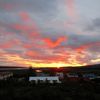
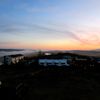

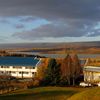

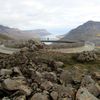

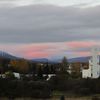
Bæta við athugasemd [Innskráning]
Ekki er lengur hægt að skrifa athugasemdir við færsluna, þar sem tímamörk á athugasemdir eru liðin.